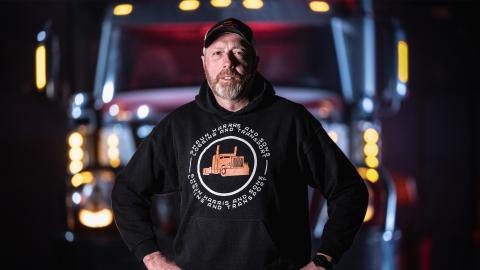The beginner's guide to genealogy
So how do you get started?
Building your family tree
Genealogy’s appeal is that it’s about far more than just piecing together names and dates, or working out who married who back in 1876. The magic of it lies in how it makes history itself more tangible and ‘real’. When genealogical research reveals relatives who fought in World War One, for example, that conflict is suddenly more than just the stuff of blurry black and white photographs, dusty museum relics and annual remembrance rituals. It suddenly becomes personal, vivid and frightening and poignant in a way no history textbook or documentary could hope to make it.
So how do you get started? Well, according to Simon Pearce, a genealogist at AncestryProGenealogists, the first step is to ‘have a chat with family members, see maybe parents or grandparents, aunts, uncles, etc, just to find out if you can gain any clues, any named dates, to give you a bit of grounding.’ You might not even be aware of just how much your living relatives know, so set aside time to chat to them and ask about specifics to do with dates and places from their childhoods, and the maiden names of female family members. Maiden names are often lost in time, making whole branches on family trees invisible to modern researchers, so this can be a crucial thing to look into.
Equally importantly, your living relatives may have a treasure trove of documentation that will be invaluable. Birth certificates of distant relations, say. Old journals filled with dates and details on places and events relevant to your family. Newspaper clippings and photographs that could contain clues on when and where people were born and raised, and lots of juicy trivia. For example, while researching his own family, pro genealogist Simon Pearce was fascinated to find his great-grandparents mentioned in a local, Kent-based newspaper article on their wedding. ‘You see that quite often,’ Simon says, ‘but the article went to a huge amount of detail and even listed all the different wedding gifts. I showed it to my nan and she remembered all the different gifts that were given that were around the house in later years.’
Even if you don’t hit this kind of documentation jackpot, even the vaguest pieces of information you glean from your living relatives and their possessions can lay a great foundation for further research. Your next stop should be Ancestry. By signing up, you’ll be able to quickly start putting together your family tree using the user-friendly system. With a few clicks or taps, you can input the information you have so far, creating the first branches of your family tree reaching back from you and your siblings to your parents and grandparents. Then, you can dive into Ancestry’s vast library of documentation. The site provides access to literally billions of pieces of data gleaned from across the globe, including census records, birth certificates, death certificates, marriage certificates, immigration records, military records and more.
The intuitive system of the site means you won’t be overwhelmed by this ocean of data. Instead, you’ll be able to tease out and pinpoint documents that might be relevant to your relatives. Look out for the green leaf icons that appear next to the names on your family tree. These are Ancestry Hints, which alert you to records in the database that may reference the relative in question. They may also point you to other users’ family trees that overlap with yours, yielding rich new seams of information.
The crucial thing when getting into genealogy is not to be disheartened if the going is slow.
Census records, which provide snapshots of households at specific moments in time, are particularly important to genealogical research. Then there’s the 1939 England and Wales Register, which was taken at the dawn of World War Two and is a vital source for genealogists. As Simon Pearce tells us, 'it's basically the closest thing we have to a census during the war’, and is a poignant portrait of the nation during one of the darkest chapters of the century. ‘I've got all my grandparents right there,’ Simon says. ‘It's just amazing, it gives you a date of birth, marital status, occupation where they were living, if they were doing any voluntary war work…’. Though it's worth noting it doesn't contain any information on living individuals for privacy reasons.
The crucial thing when getting into genealogy is not to be disheartened if the going is slow. Hitting occasional brick walls is inevitable, and the trick is to enjoy the detective work, and put in the time to really feel around the documentation, follow up Ancestry Hints and find new rabbit holes to explore.
If that’s piqued your interest and you’re ready to see what you can find out about your family, sign up to Ancestry’s 14-day free trial and take the first steps in getting to know the people in your past.















